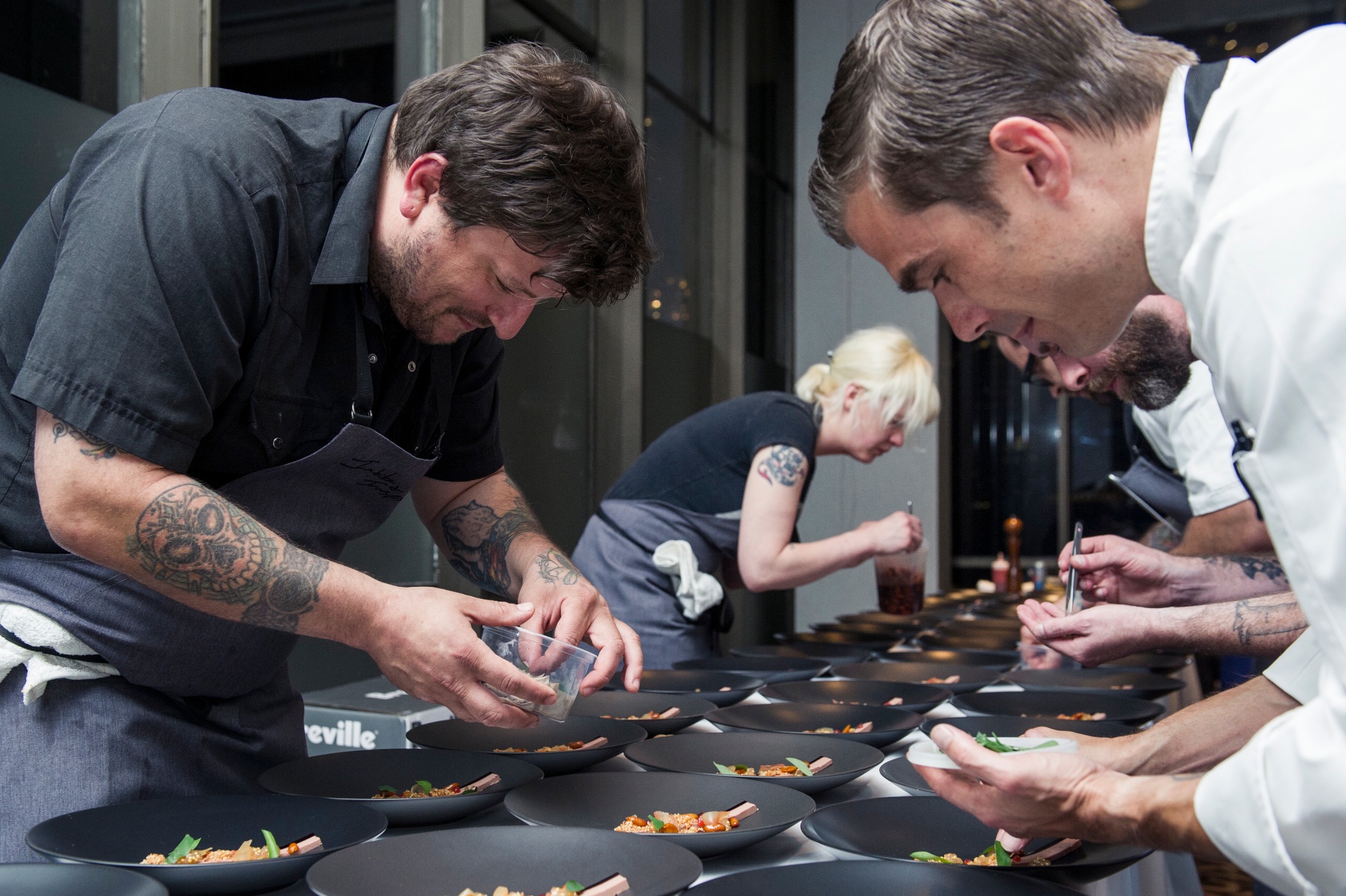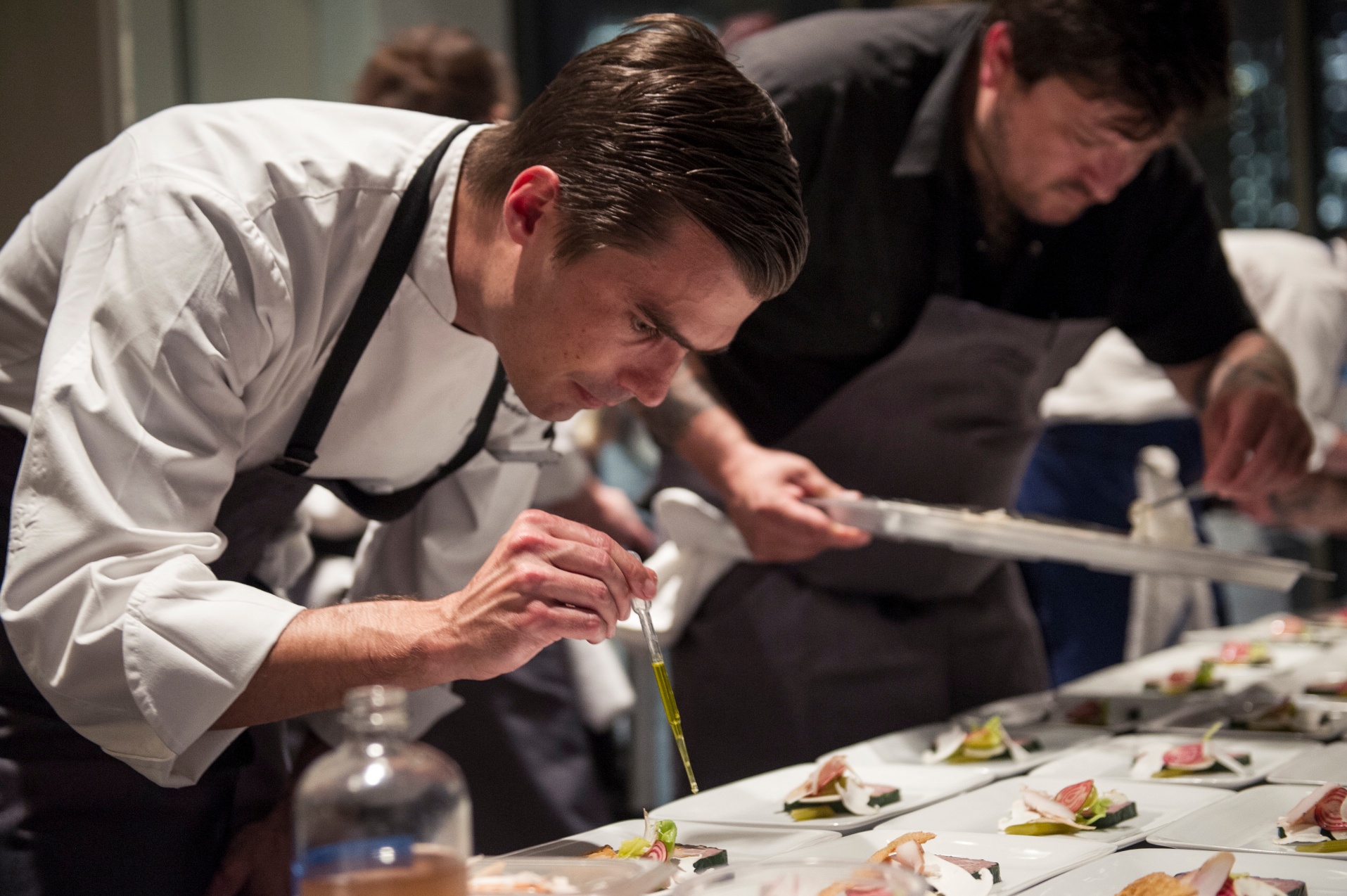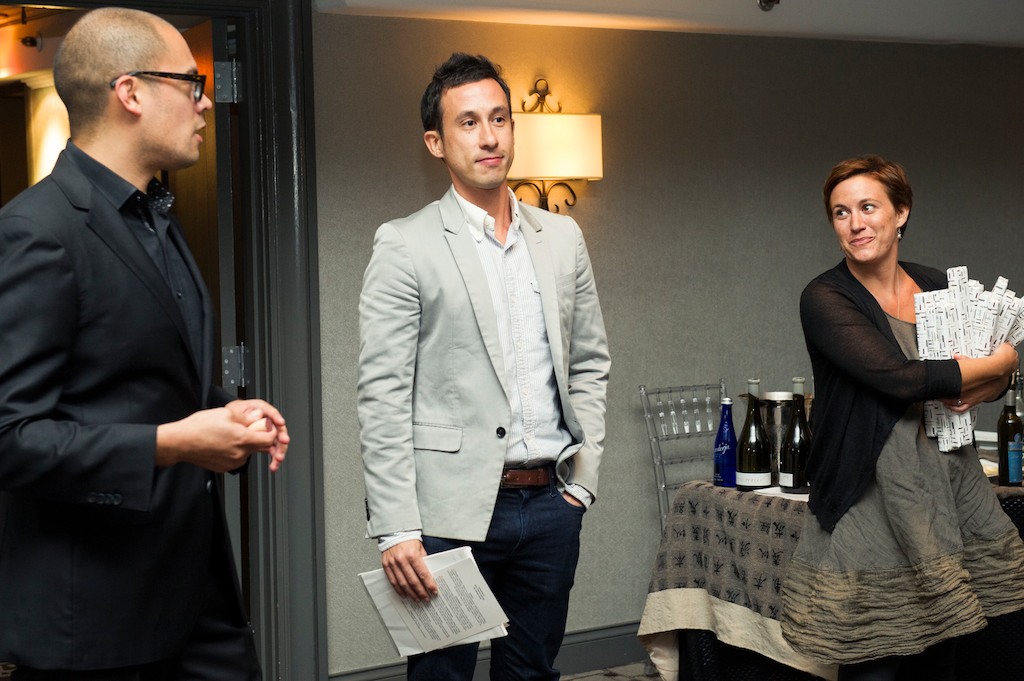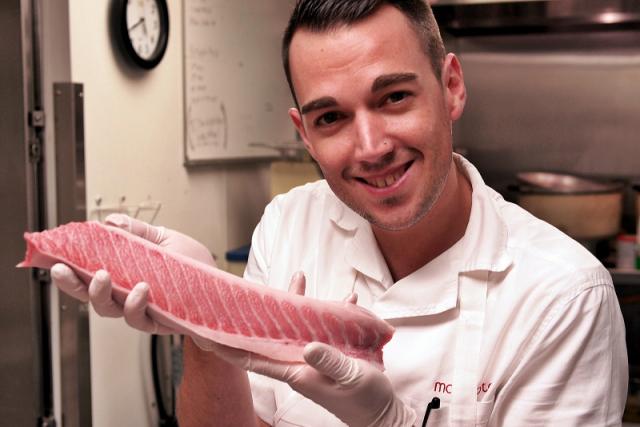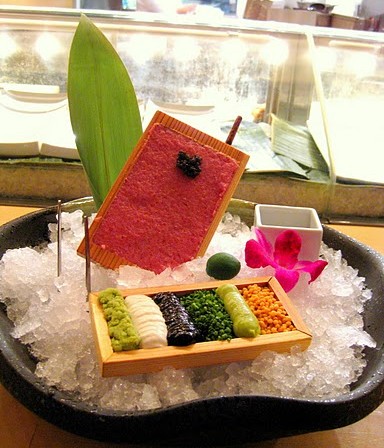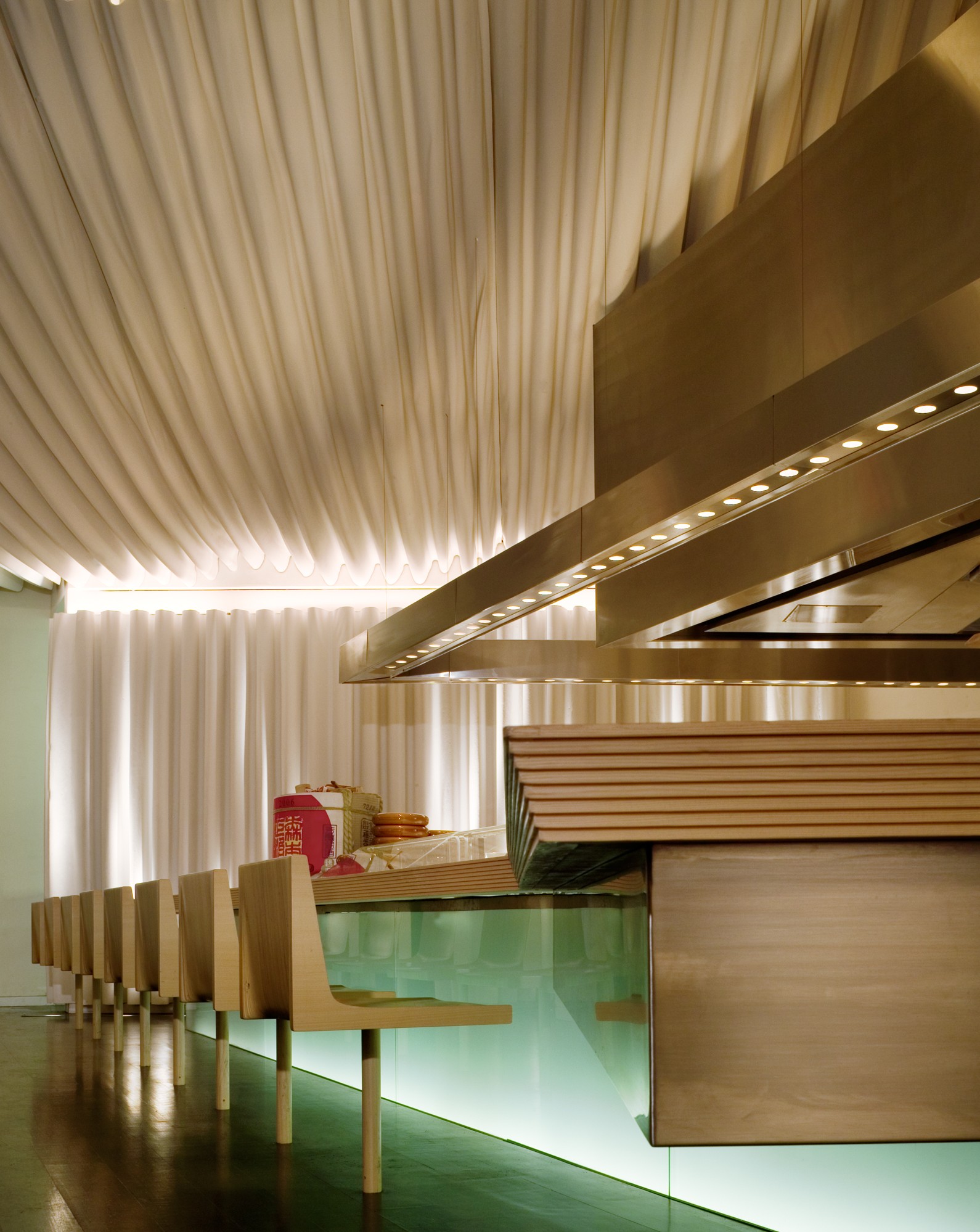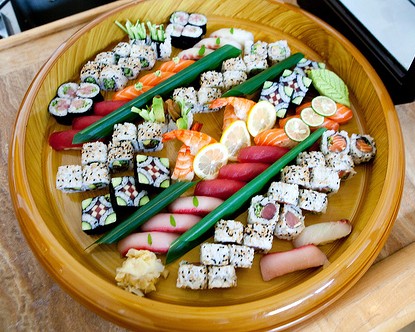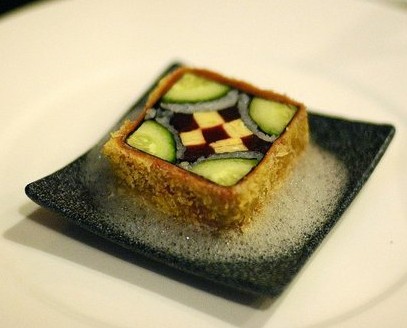On September 29th, a handful of America’s most visionary chefs, culinary and hospitality minds gathered to ponder an increasingly relevant and difficult to answer question, “How do we define American Food?”. The Roots of American Foodways, presented by Imbibe + Inspire’s Stephen Torres took place on the top floor of the Hotel 71 Wyndham in Chicago. Chubo was honored to be part of a thought provoking and enlightening day of talks followed by a stunning meal from some of the world’s most talented chefs. Highlights below. Photography courtesy of Evan Sung and Imbibe + Inspire.
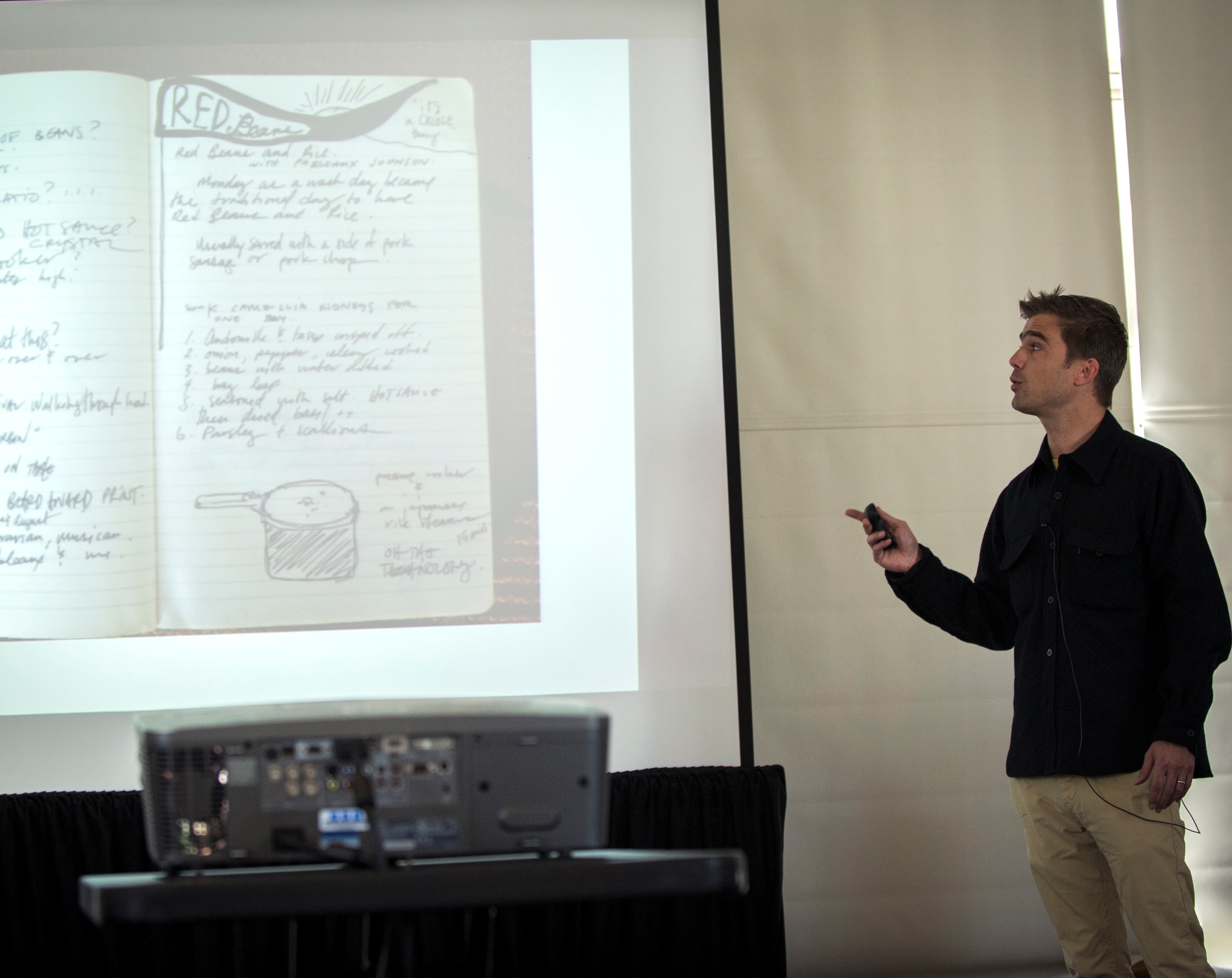
The program kicked off the morning session with Chef Hugh Acheson of Georgia’s 5&10, The National and Empire State South. Hugh’s talk entitled, “ Don’t Eat the Red Herring: The Quest to Define American Food” and cleared up myths about the heritage of southern food traditions.
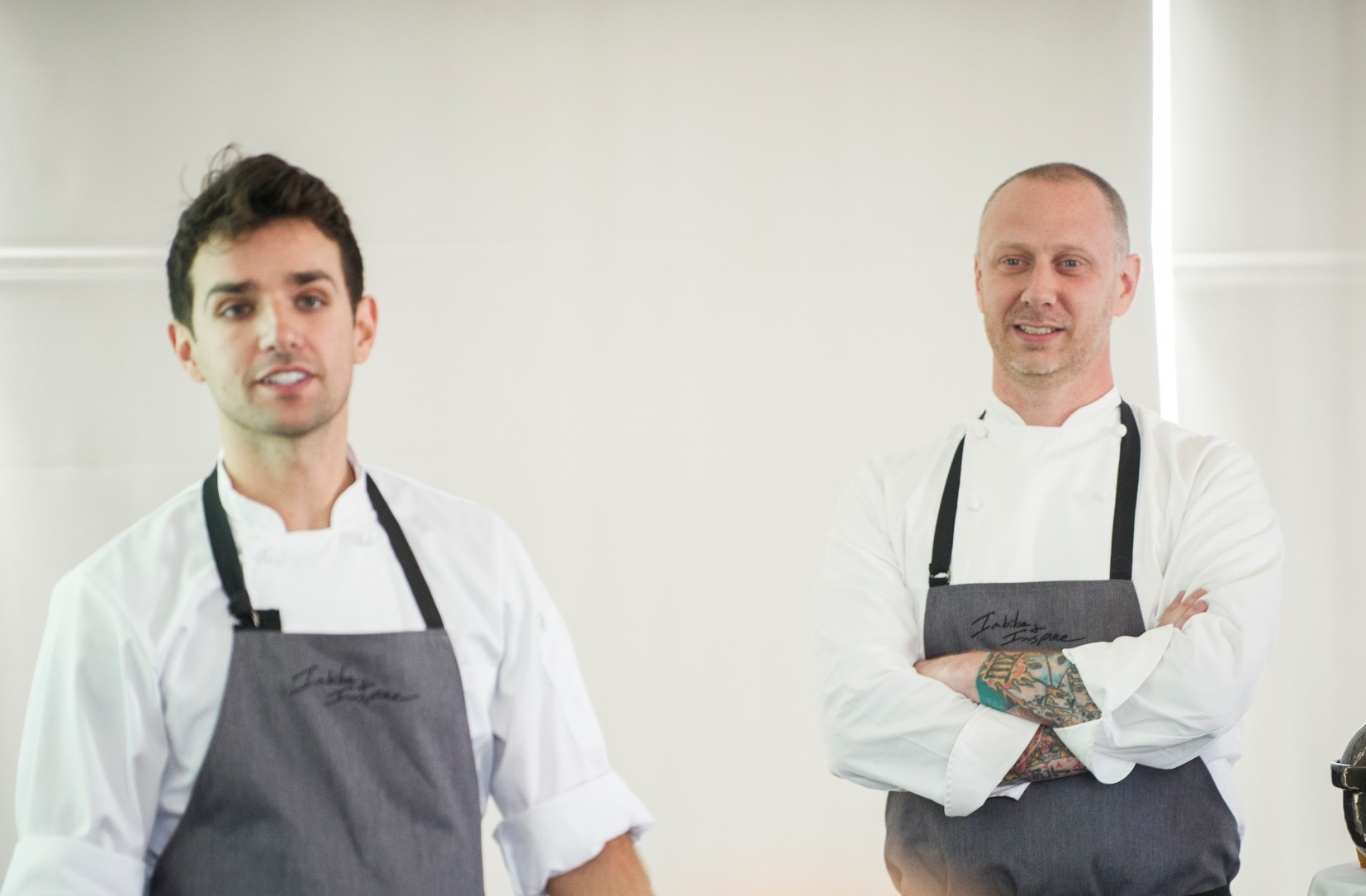
Kyle Connaughton (right), formerly of the Fat Duck, spoke on, Tracing America’s Palate for Umami: The Fifth Taste’s Emergence in American Cuisine Culture”
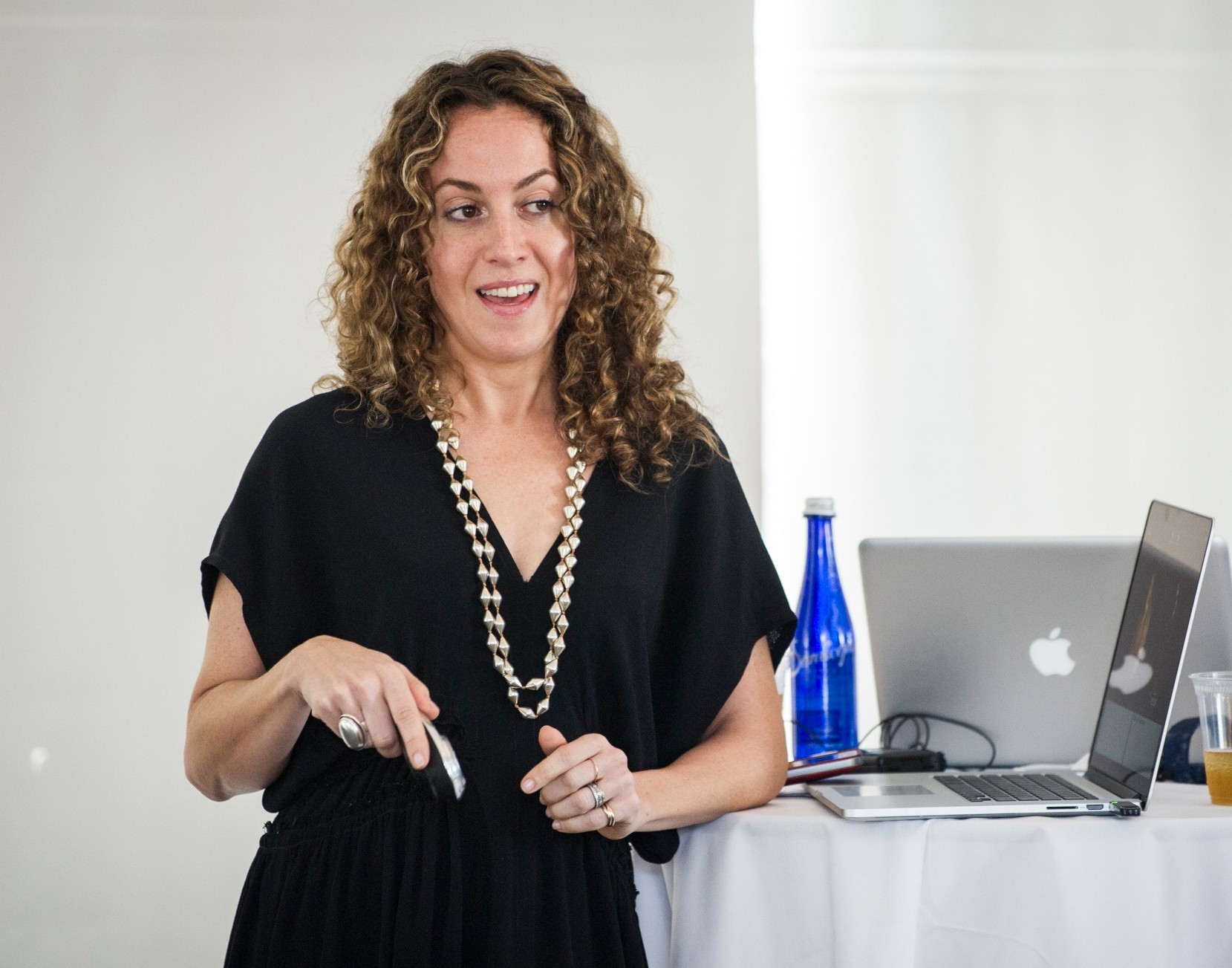
Melanie Dunea is the creator and photographer behind “My Last Supper“, a series that asks famous chefs and food personalities, “What would be your last meal on earth?” Melanie spoke about “Food Porn: Painting and Photos” Tracing our obsession with capturing what’s on our plates and what it means for culinary culture today.
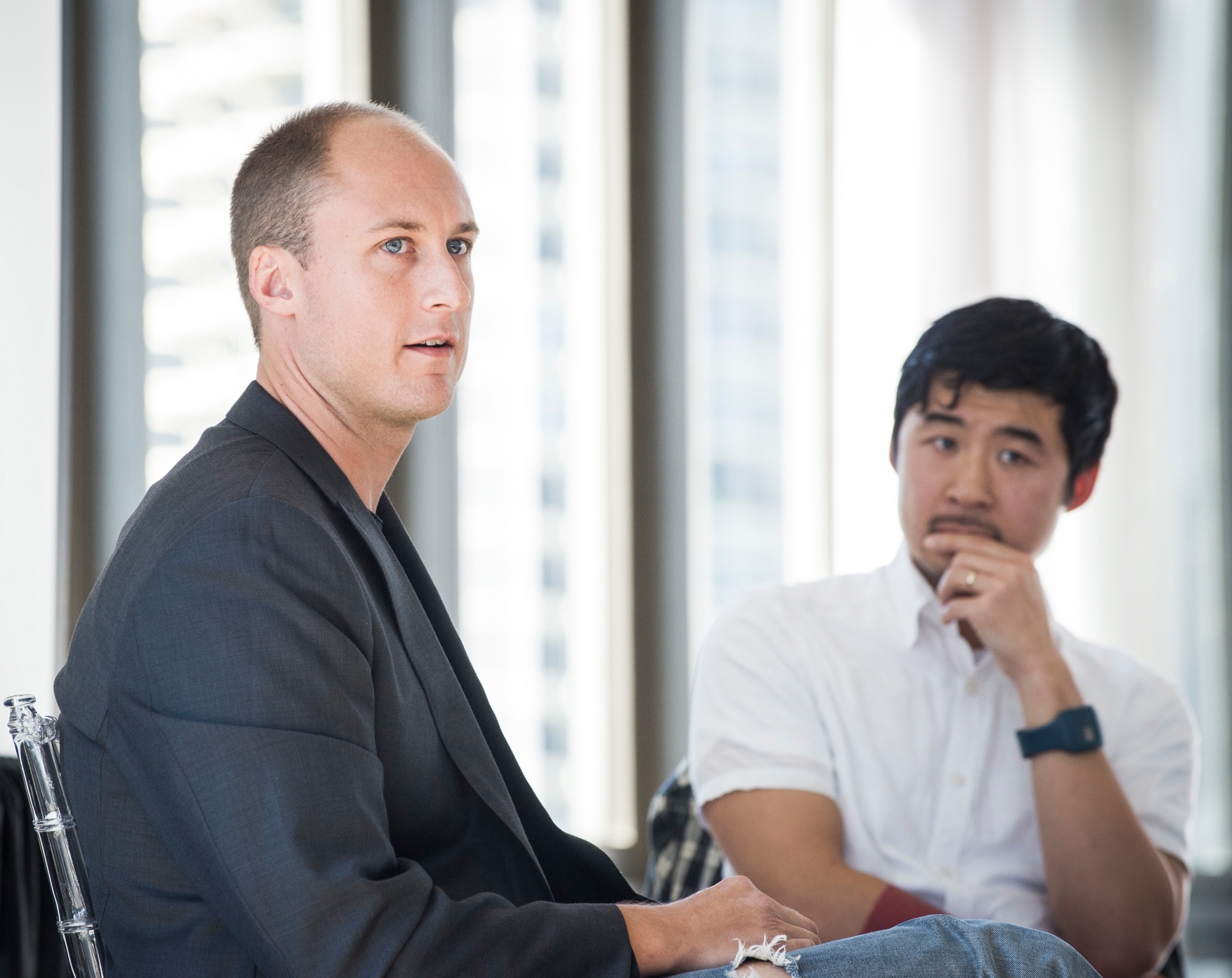
Dave Beran, Chef of Next in conversation with Francis Lam on, “Telling Stories through Meals and Menus” It provided a rare glimpse into what goes into creating a story driven menu like the ones found at Alinea and now Next, Specifically charting how a concept or intangible idea ultimately winds up on a diner’s plate.
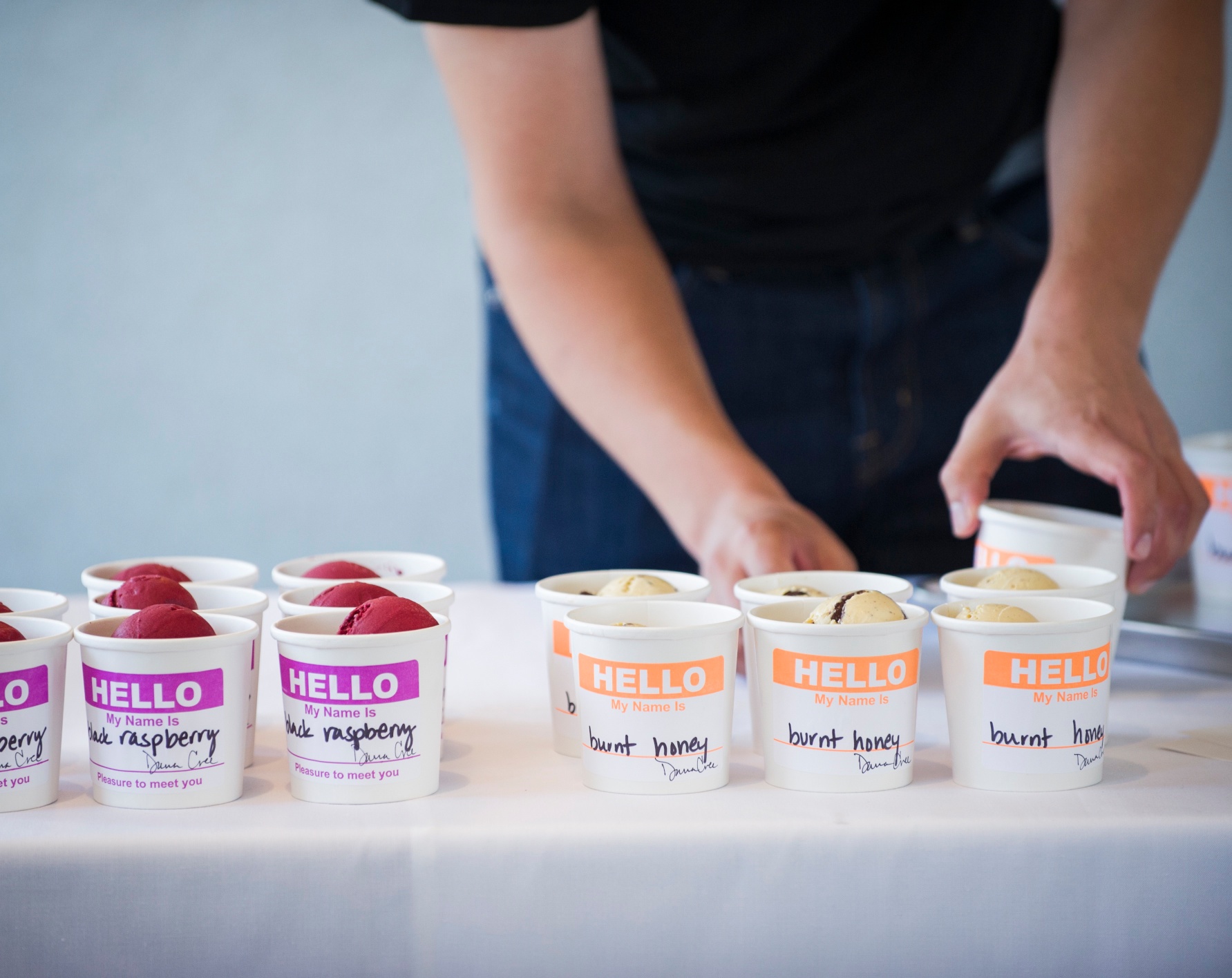
BlackBird Pastry Chef, Dana Cree treated us to a mind blowing ice cream social with flavor combinations like Malort (Chicago’s original wormwood spirit) Bubble Gum (deriving its flavors from the very natural vanilla, banana, orange and lemon) as well as Raspberry Licorice and Burnt Honey.
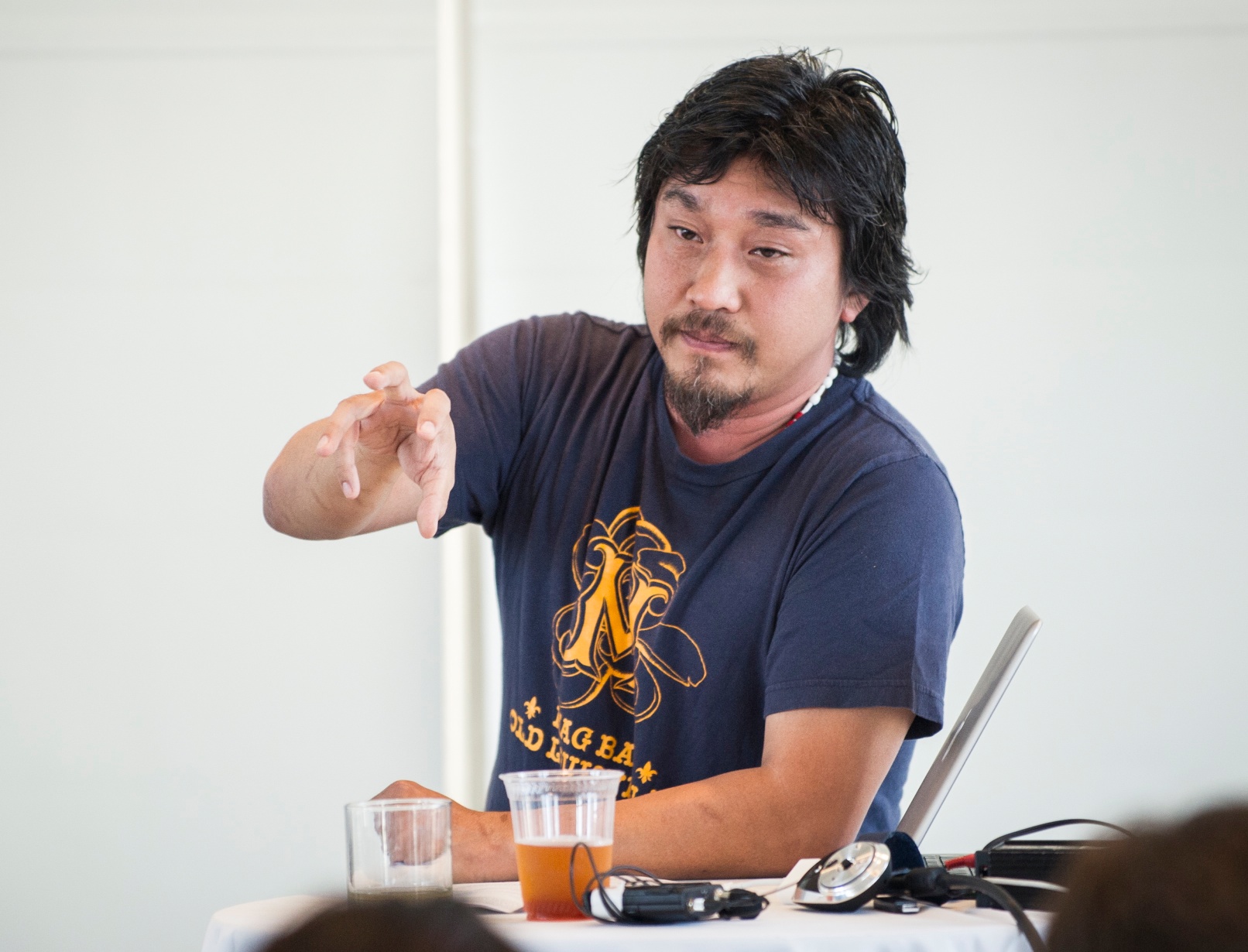
Ed Lee of Louisville, KY’s 610 Magnolia spoke about “The Antho(a)pology of the ‘Other’ American Cuisine” a truly fascinating insight into how foreign culinary traditions are appropriated and often misunderstood.
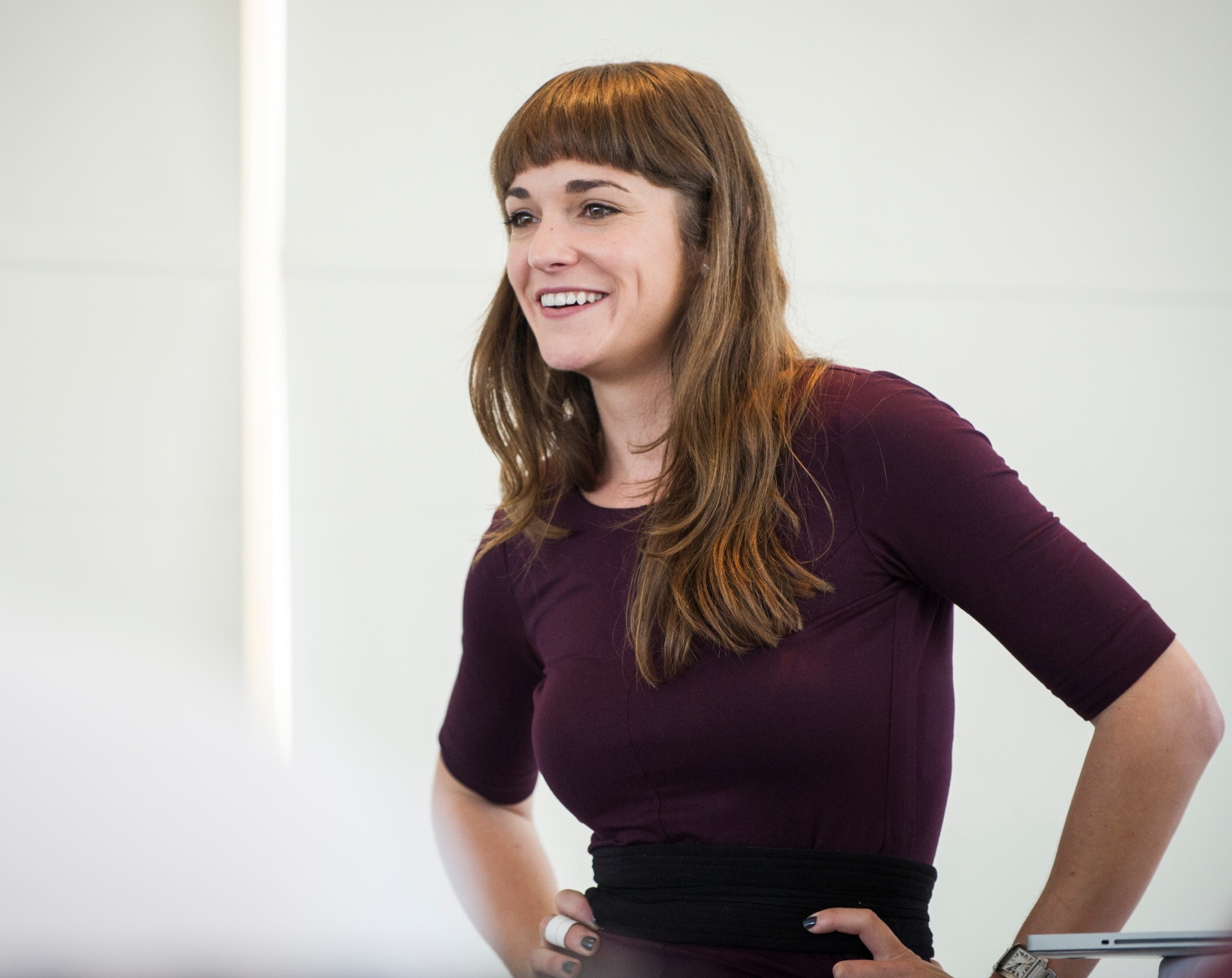 Christina Turley of Turley Vineyards on “Old Vines, Young Minds: California’s Wine Heritage”
Christina Turley of Turley Vineyards on “Old Vines, Young Minds: California’s Wine Heritage”
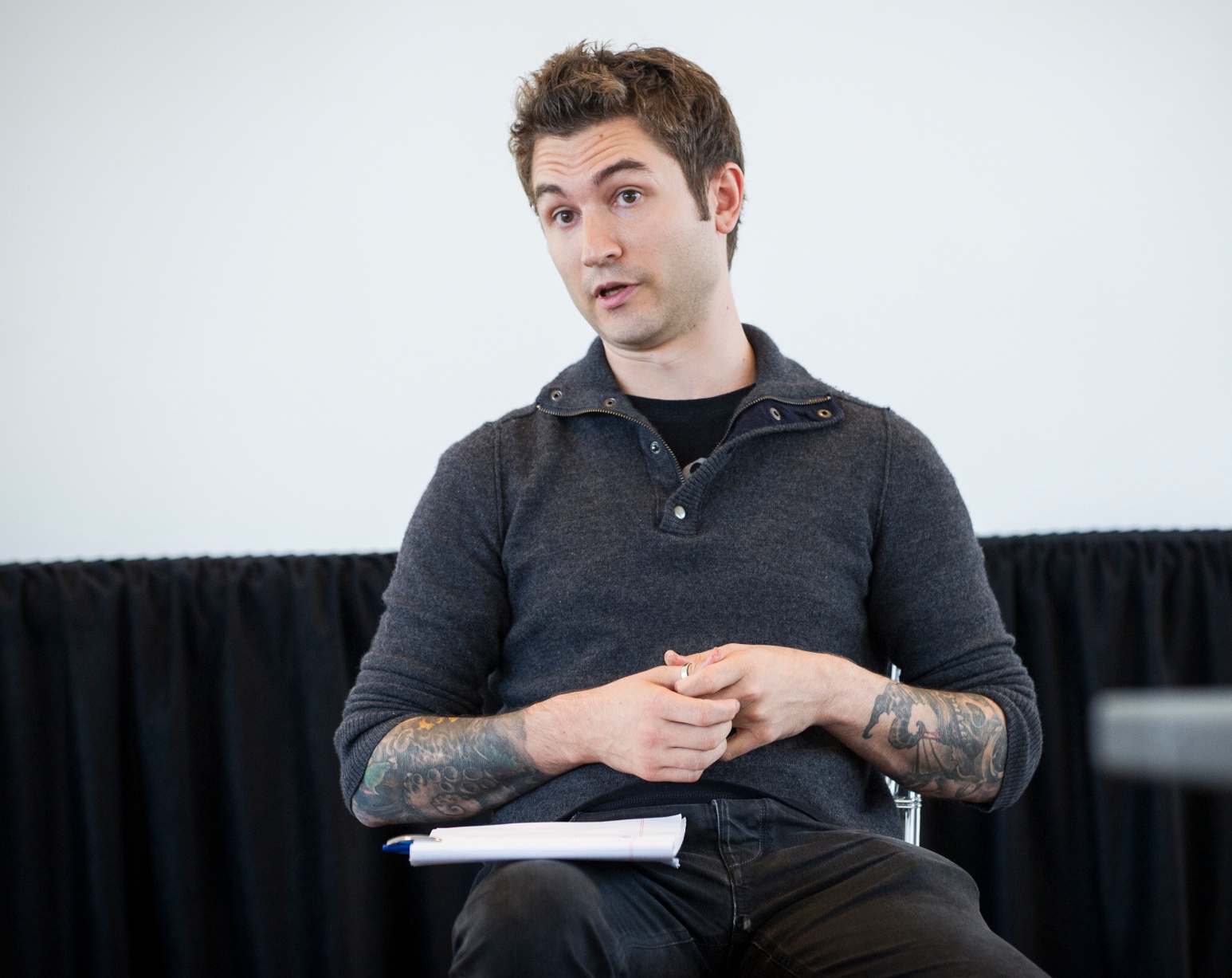 Alex Stupak, Chef of Empellon Cucina speaking on “Reverse Colonization” and the challenges of redefining value propositions in colonial cuisines.
Alex Stupak, Chef of Empellon Cucina speaking on “Reverse Colonization” and the challenges of redefining value propositions in colonial cuisines.
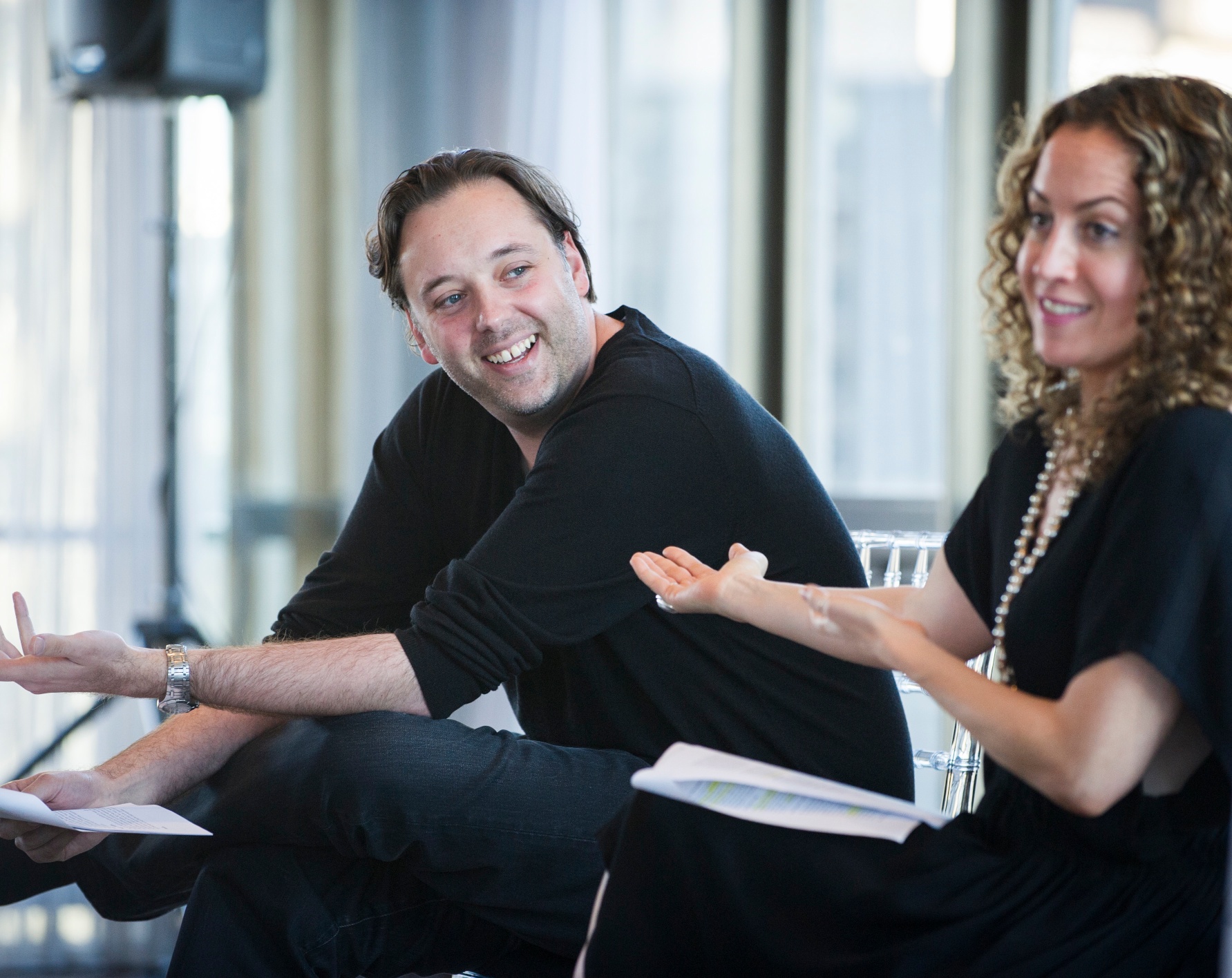
Paul Liebrandt (with Melanie Dunea) on “A Century of British Food”
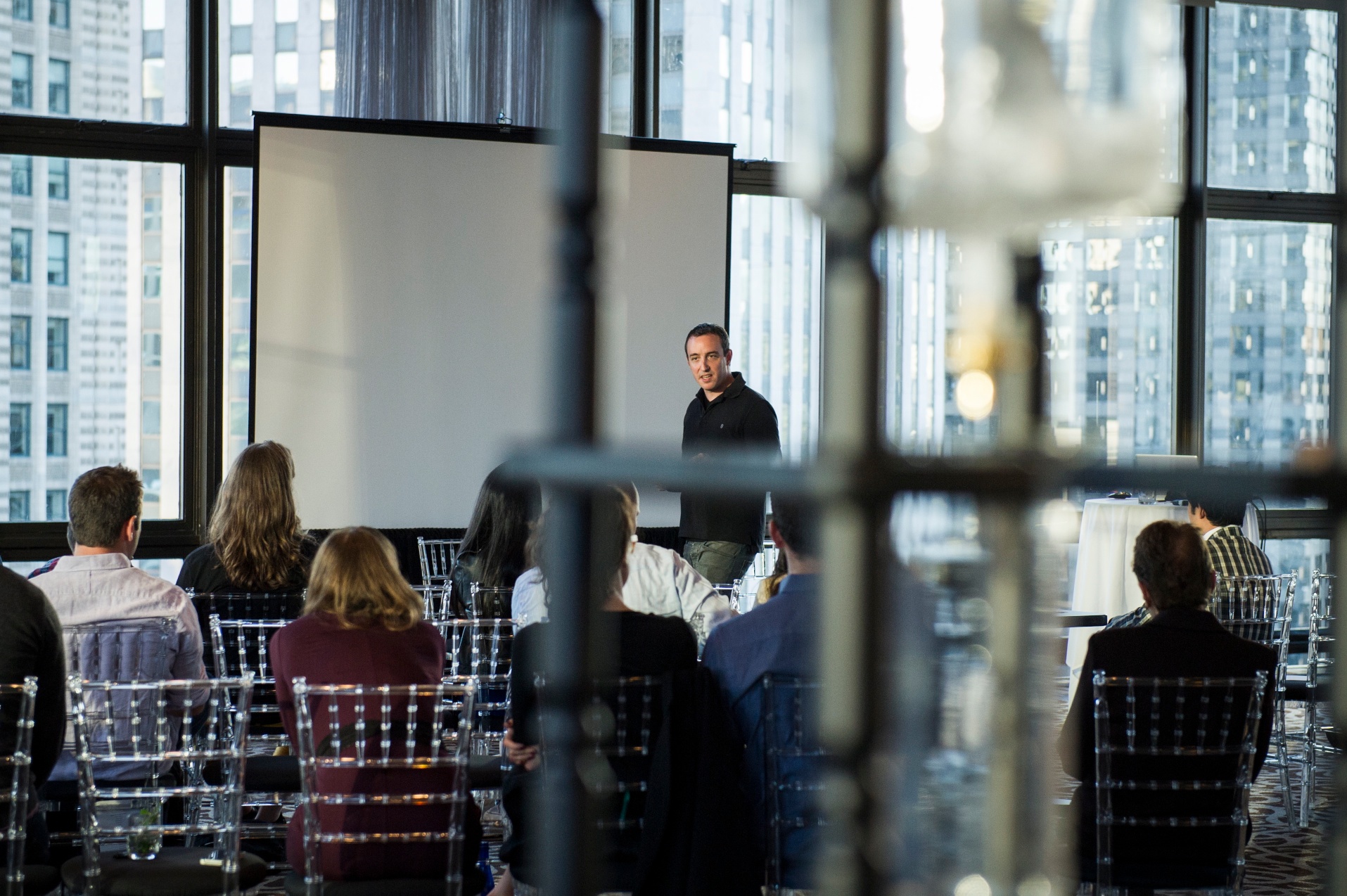
Lastly Will Guidara of Eleven Madison Park spoke about “Establishing Cultural Roots” The talks were followed by cocktails from Chicago’s Rare Tea Cellar.
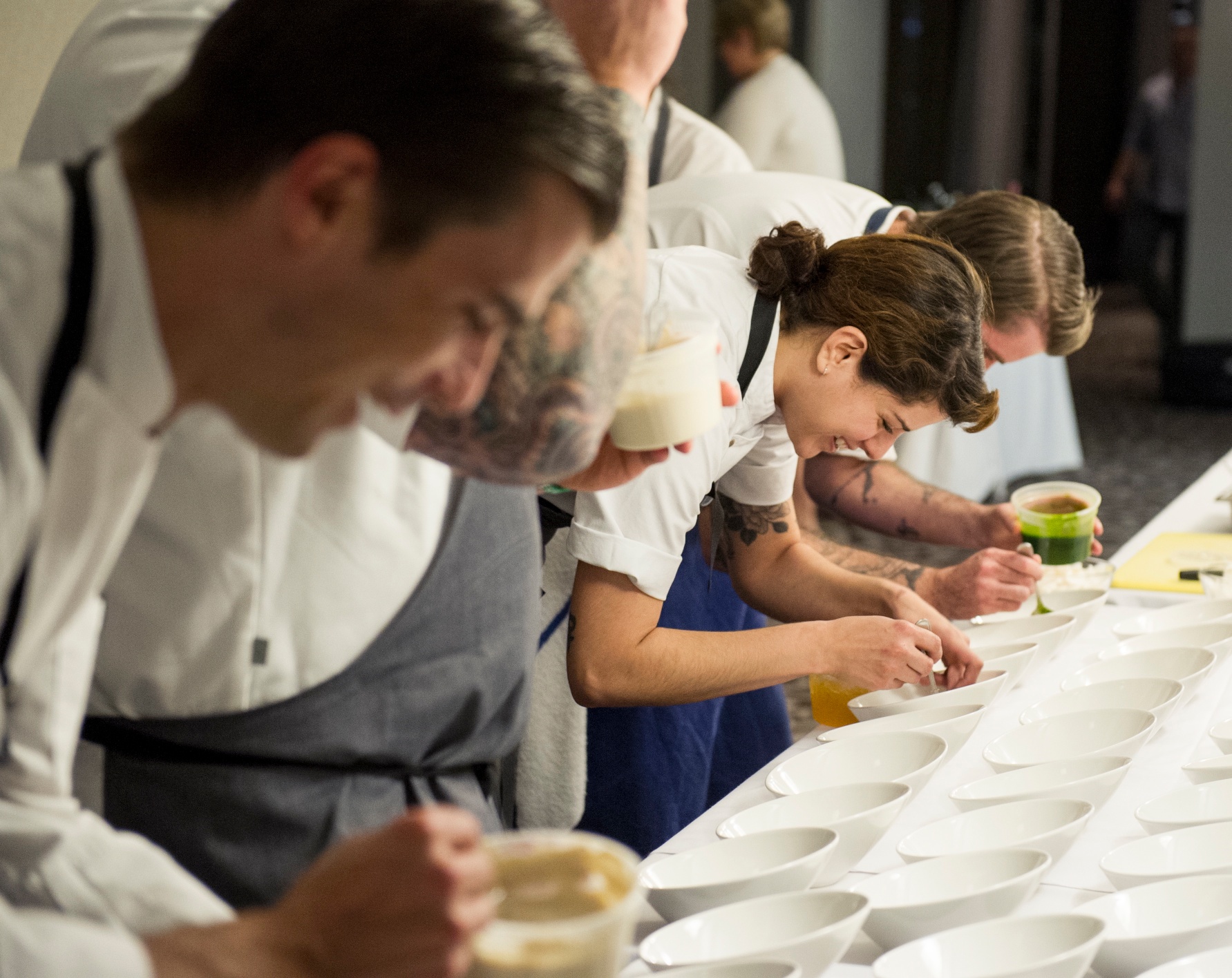
The nine course meal was paired with Cider from Virtue and a selection of wines from both California’s Turley Wine Cellars and Long Island’s Macari Vineyard.
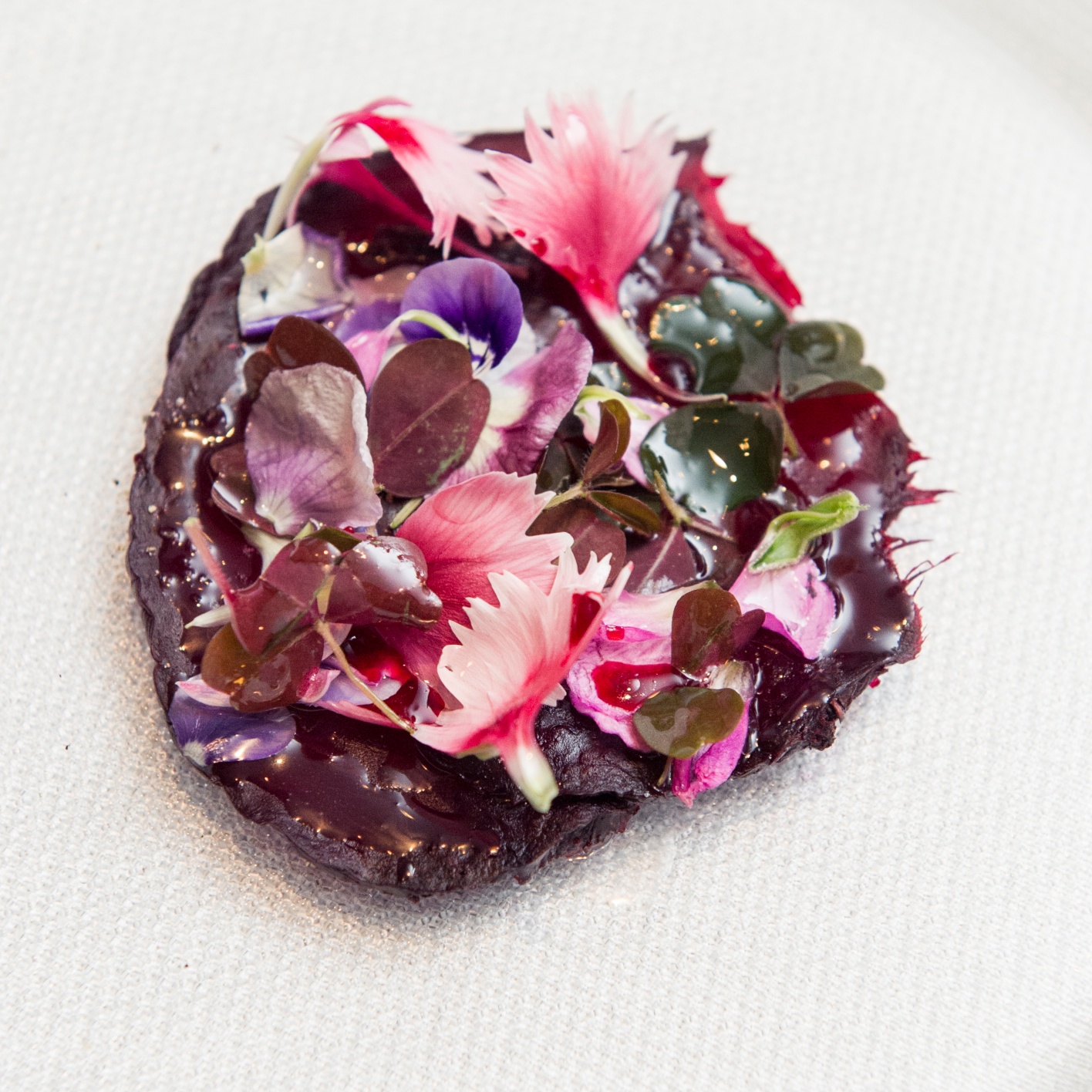
Beets, Hibiscus, Aged Beef Fat and Aromatics
Matthew Lightner, Atera NYC
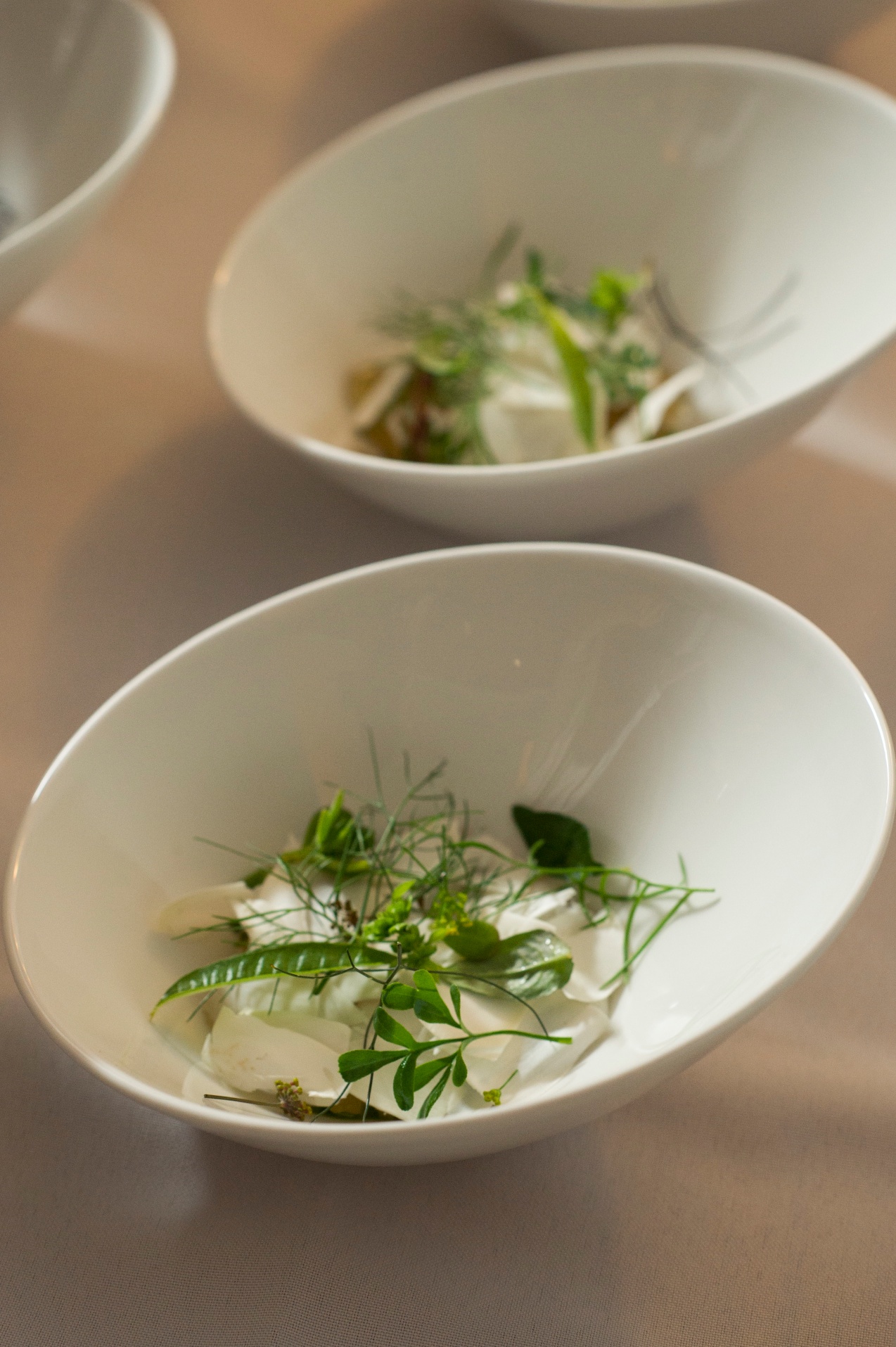
Matsutake and the End of Summer’s Foliage
John Shields, Formerly of Town House, Chilhowie, VA
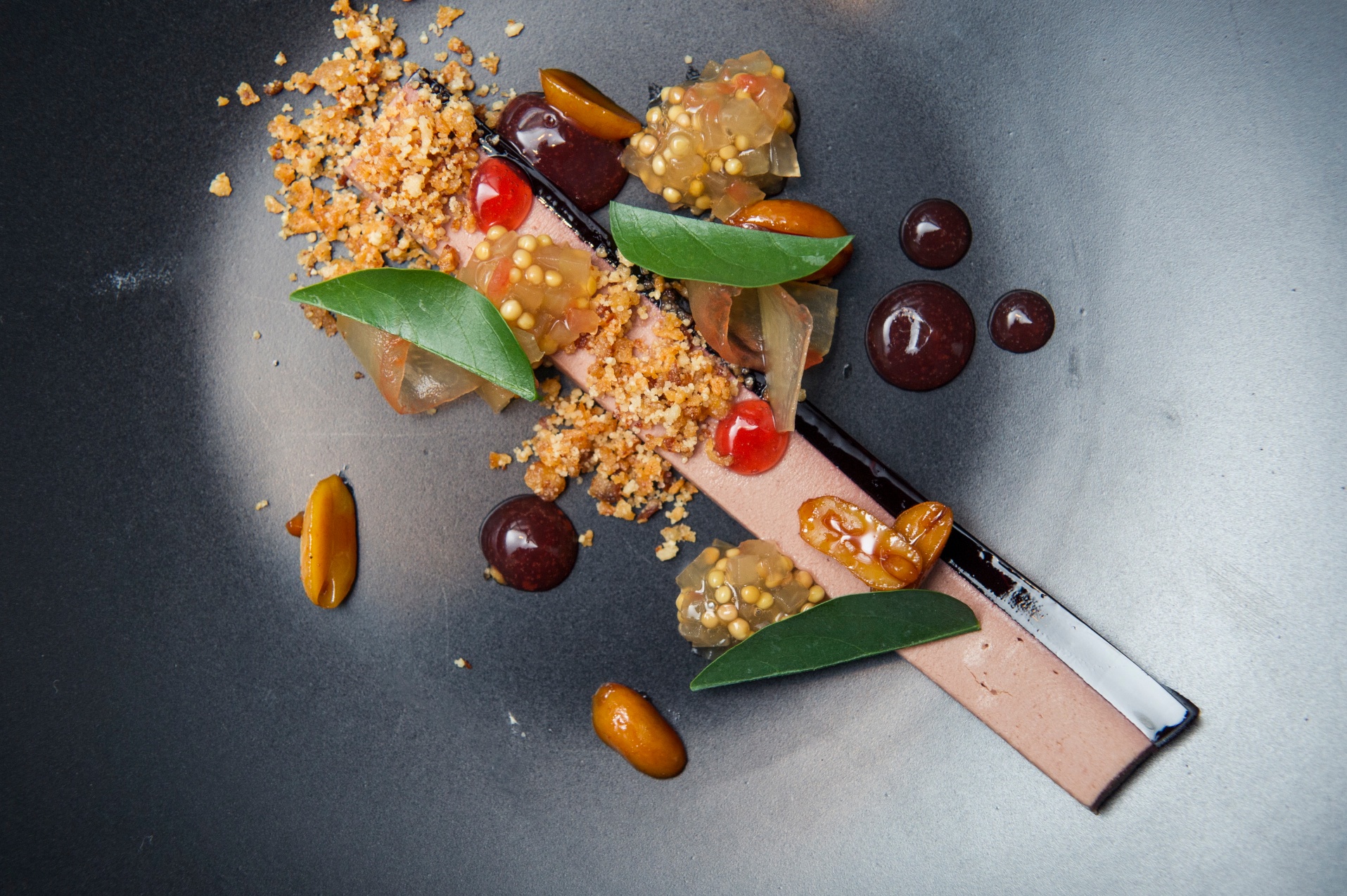
Chicken Liver, Cheer Wine, Boiled Peanuts, Pickled Watermelon and Fried Chicken Crumble
Erik Anderson, The Catbird Seat, Nashville, TN
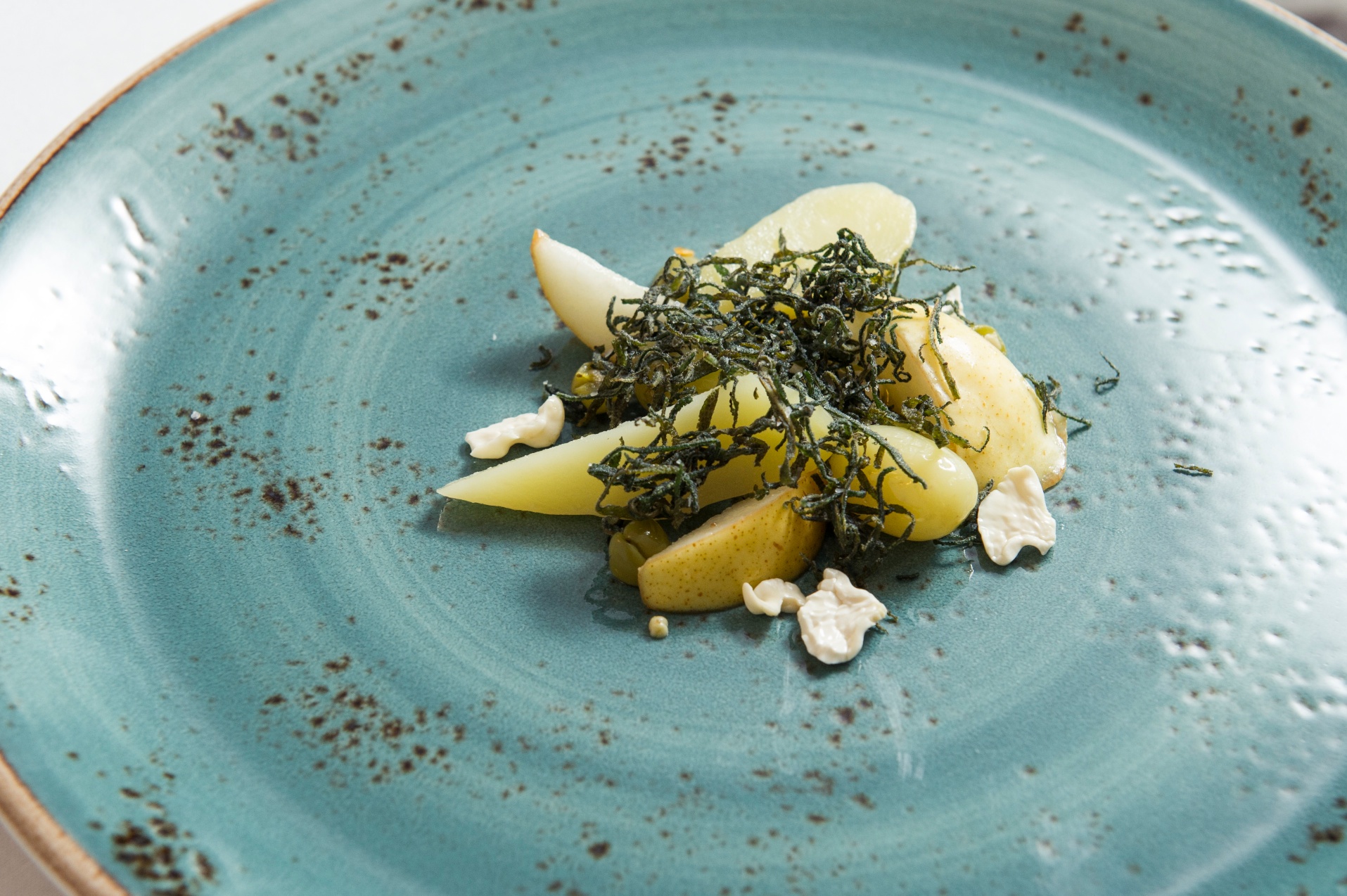
Pear, Potato, Black Walnut and Sage
Greg Baxtrom, Formerly of Blue Hill at Stone Barns, Pocantico Hills, NY
(All the ingredients came from Greg’s parents Illinois Farm)
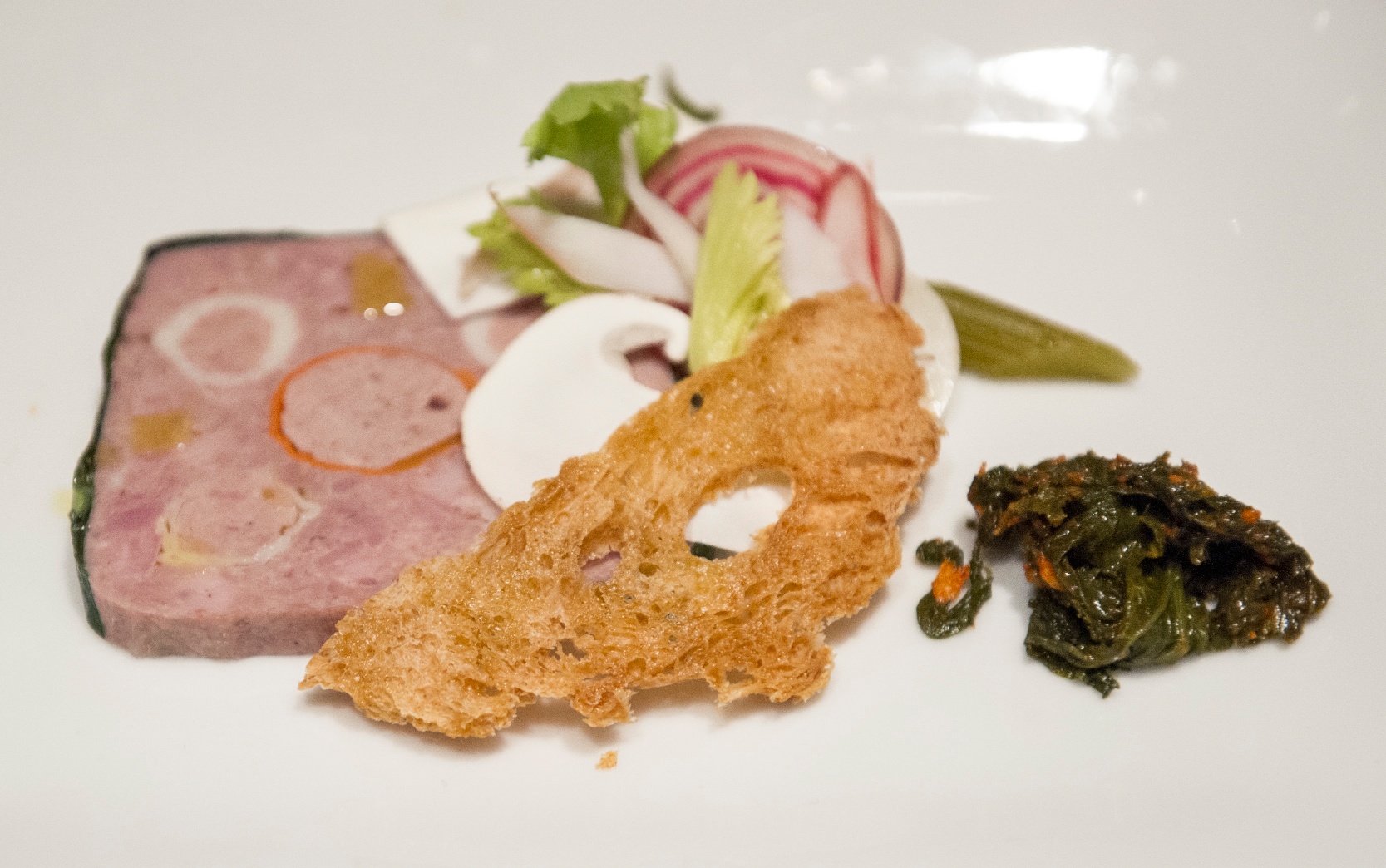
Rabbit Terrine, Pickled Celery, Mustard Green Kimchi, Shaved Matsutake, Celery Leaves and Crisp Bread
Hugh Acheson, 5&10, Athens, GA
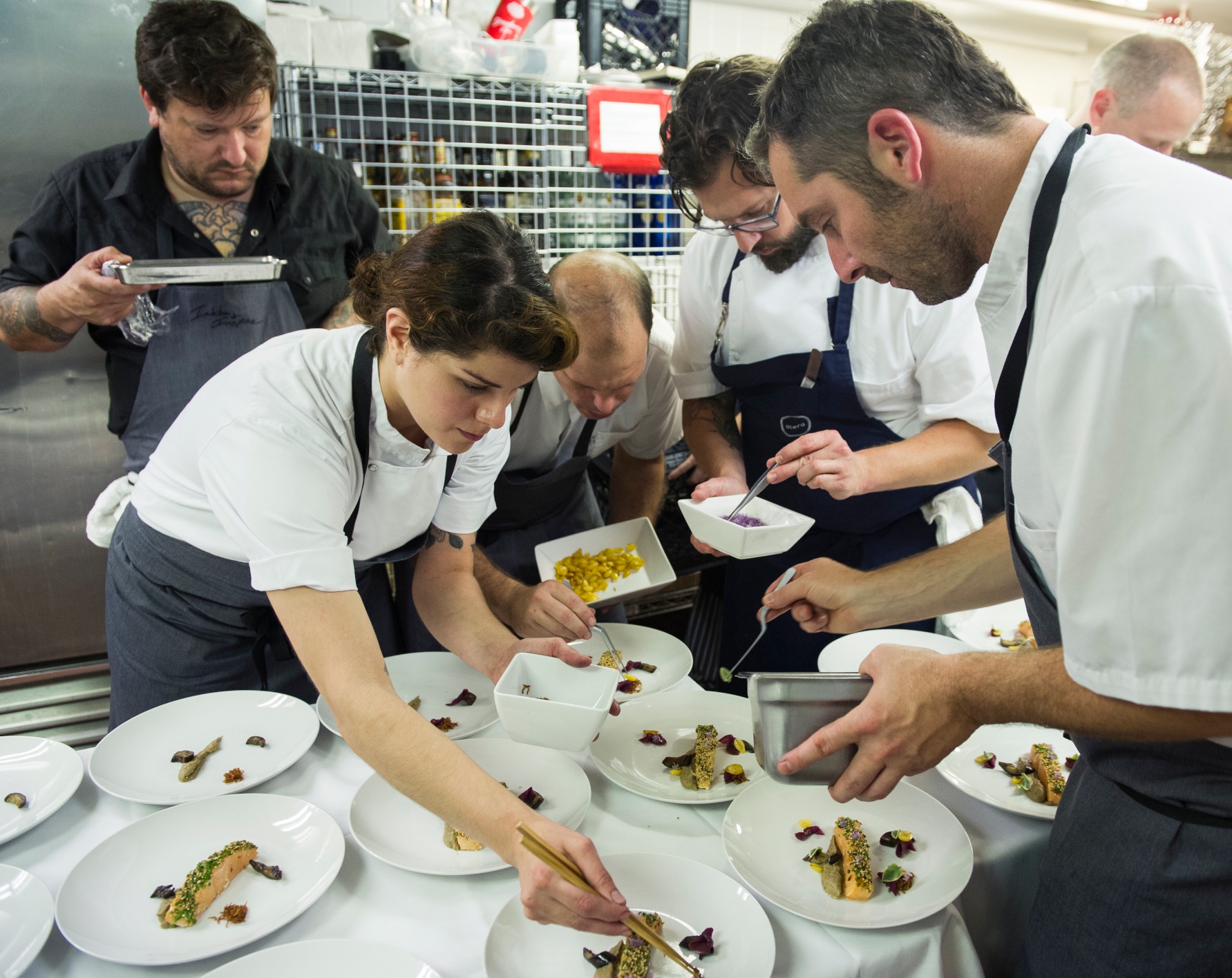
Smoked Salmon Ibushi-Gin, Charred Kyoto Eggplant, Sesame Miso, Ginko Nuts and Shibazuke
Kyle Connaughton, Formerly of The Fat Duck, Bray West Berkshire
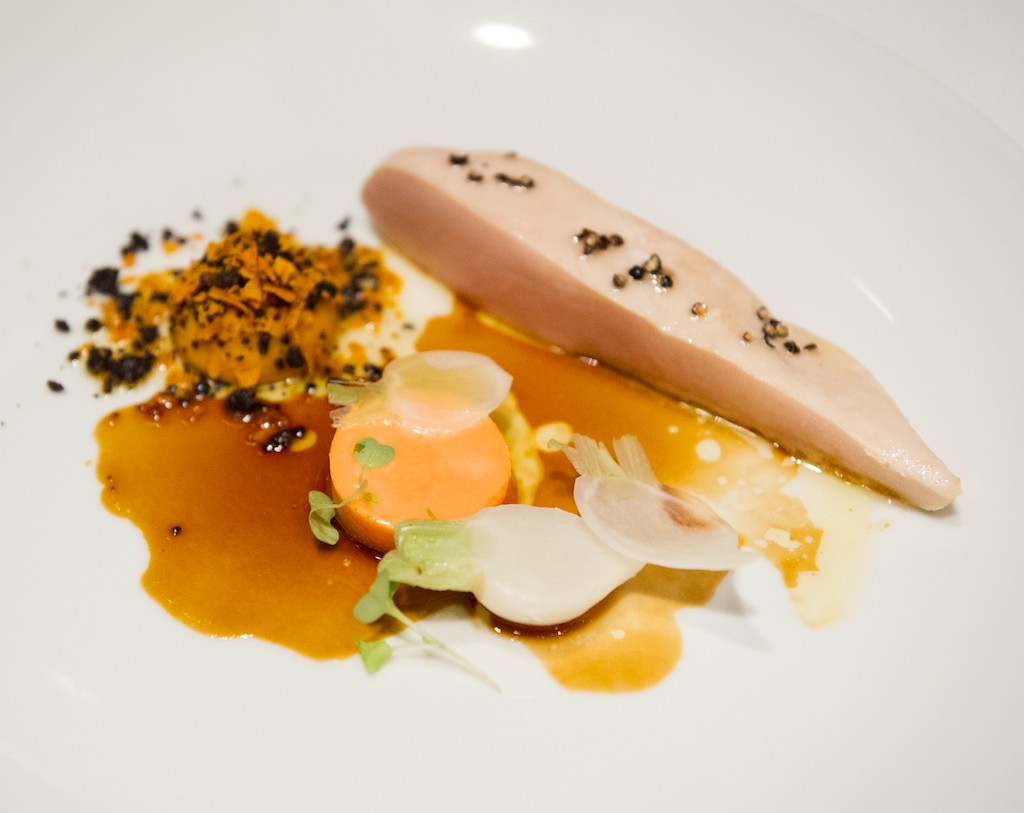
Smoked Chicken Breast, Fermented Sweet Potato, Pumpernickel and Tokyo Turnip
Jason Franey, Canlis, Seattle, WA
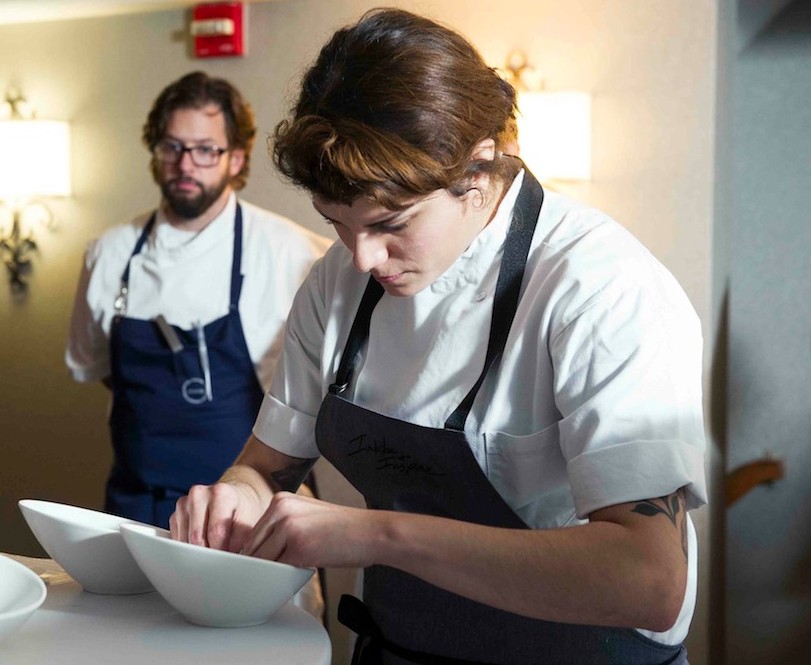
Preserved Berries and Caramelized Whey
Rosio Sanchez, Noma, Copenhagen, Denmark
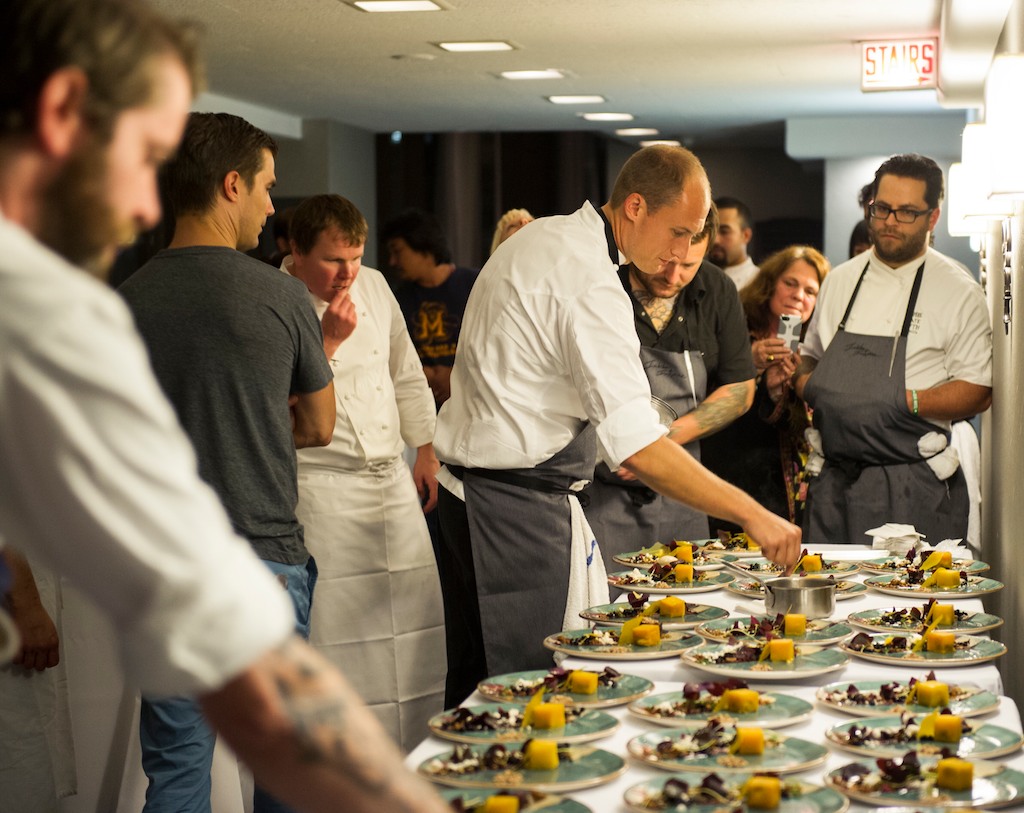
Squash, Huckleberry and Pecans
Dave Beran, Next, Chicago, IL


